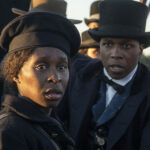Harriet Tubman, a woman filled with immense bravery, freed 70 slaves with no casualties. Her 13 dangerous missions were accomplished through the Underground Railroad as legend is told. Ms. Tubman has finally become the modern-day hero she deserved to be almost two centuries ago. Kasi Lemmons directed (and co-wrote with Gregory Allen Howard) Harriet.She accurately captures the period and the painful existence of American slaves in the 1800s. The task of recreating this powerful figure onscreen was a serious undertaking that proved to be beyond successful. Lemmons uncovered Harriet Tubman’s persona and constructed a remarkable and beautiful film.
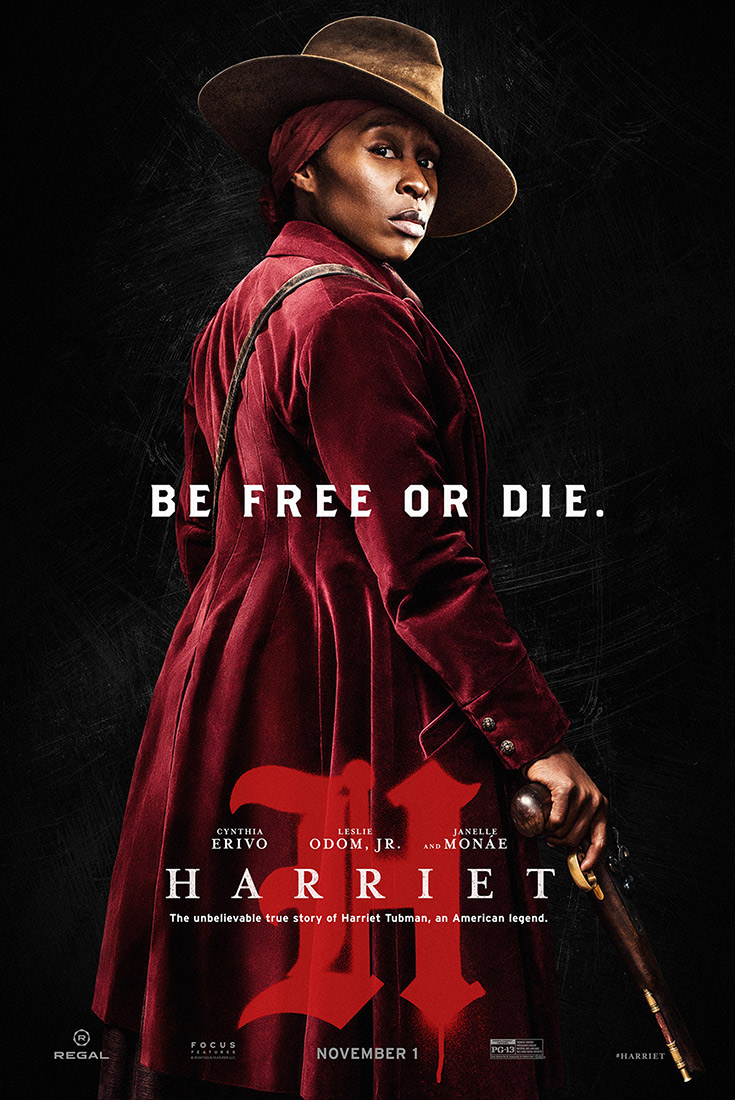
“What struck me as important was that Harriet had a super hero profile and I wanted to bring her back to womanhood.” -Kasi Lemmons
As Lemmons described the atmosphere on set, it seemed as if cast and crew were on a mission, working together for a bigger purpose.
“The cast, the crew, everyone was there for the exact same reason, which was for Harriet. I have never been on a movie where that had happened before.”
I first encountered Kasi Lemmons at the Greenlight Women’s Brunch back in February 2019, celebrating Black History Month. At that luncheon, she was being honored as a trailblazer in the entertainment industry. During Lemmons’s speech, revealed that she had always been drawn to the South, its stories, and its ghosts.
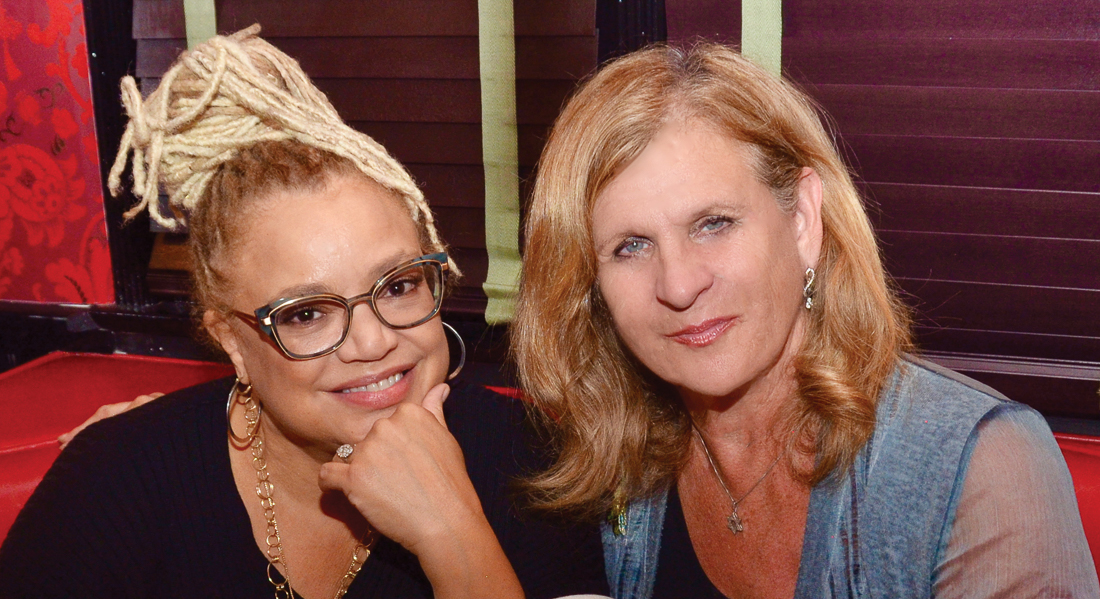
“I have spent a lot of my time researching stories of African American history, which of course is American history. It can be troubling, and it can be infuriating. The stories can be terribly sad but also very inspiring. For the past year now, I have had the good fortune to work on the most inspiring story in African American history. It’s a story of fearlessness. It’s a story of flight. It’s a story of feminism. It’s a story of fierceness and freedom. It’s the story of Harriet Tubman.”
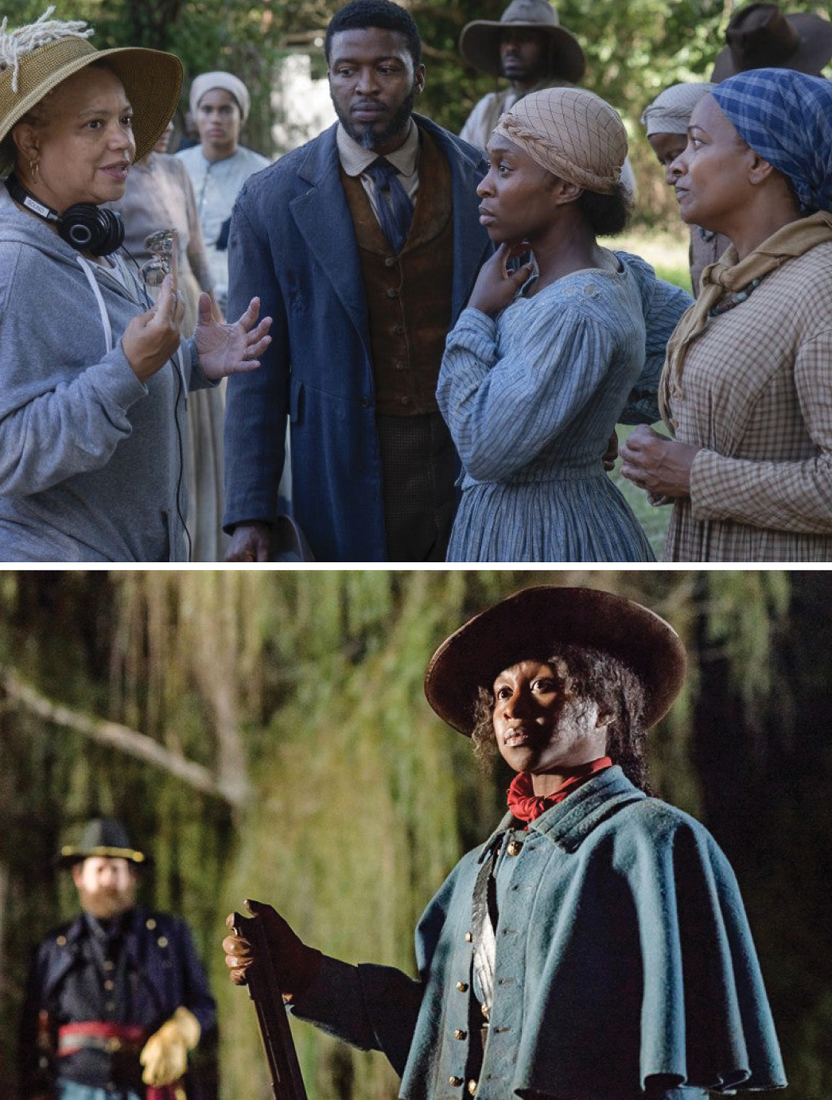
On November 1, 2019, Harriet the film was released throughout America, starring Cynthia Erivo as Harriet, Leslie Odom, Jr. as William Still, Joe Alwyn as Gideon, Janelle Monae as Marie Buchanon, Vanessa Bell Calloway as Ritt Ross (Harriet’s Mother), Vondie Curtis-Hall as Reverend Samuel Green (he is Kasi Lemmons husband), and Antonio J. Bell as Henry Ross (Kasi Lemmons’s son). Kasi Lemmons wrote and directed Eve’s Bayou, Dr. Hugo, The Caveman’s Valentine, Talk to Me, and Black Nativity. in 1979, she began her career as an actress in the film/television industry. Some of her acting credits include The Cosby Show, ER, Spike Lee’s School Daze, and Silence of the Lambs.
I was fortunate to interview Kasi Lemmons at the (Writer’s Guild of America West) WGAW’s Behind the Screen event on November 12, 2019, at the Formosa Cafe in West Hollywood.
“The project was incredibly beautiful to be a part of . . . focusing on an incredibly beautiful subject with incredibly talented actors, and a great crew.”
Interview by Sheryl Aronson | Responses by Kasi Lemmons
Sheryl Aronson: Harriet is a phenomenal film that you directed and co-wrote. Please tell me how you got involved with this movie.
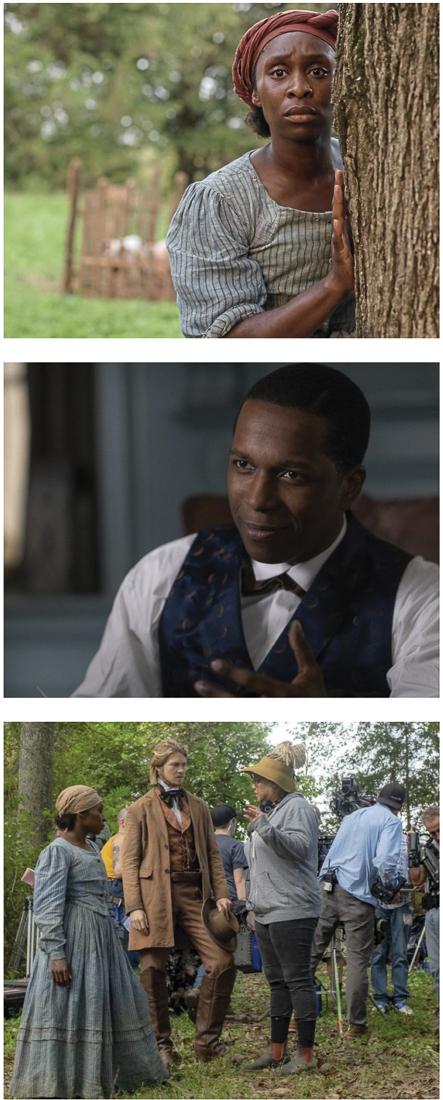
Kasi Lemmons: When I got invited on the set, some of the producers were prepared to make the movie themselves. Daniela Taplin Lunberg was ready to finance the film. I wanted to make the story more about Harriet, about the texture of that community, and what she was really like as a woman. I wanted to give it a bigger scope. That’s when Focus Features came on and gave me the opportunity to make the movie I envisioned.
Sheryl Aronson: Harriet was an incredible person, and she accomplished miraculous feats as a women. How did you develop her character, and what were the important points you wanted the audience to learn about her.
Kasi Lemmons: What struck me as important was that Harriet had a superhero profile, and I wanted to bring her back to womanhood. She was motivated by love. She was motivated by the desire to free her family and her husband. She had heartbreak and she experienced loss. Once I realized this, I thought, this is every woman. This is every Black woman. We use our pain to make us stronger. I then felt that Harriet was somebody who was very relatable.
Sheryl Aronson: Harriet had a very strong spiritual life. She was like a prophet and had a powerful connection to God. How did you as a writer/director use these qualities to create her character?
Kasi Lemmons: I believe that Harriet was one of the prophets. She was like Mother Theresa or Ghandi—one of the great people who walked the face of the earth. How do you ground that person? She spoke very eloquently about the spiritual realm, and remained very consistent with her words. People witnessed her visions and the prescient and accuracy of her visions. I wanted to present this ultimately from her point of view. I believed her, at least for the exercise for making this movie. But honestly, I believed her. It was witnessed by the abolitionists and friends of hers that she had visions that were incredibly accurate. Even her contemporaries said, “We don’t know if we believe it, but we know that she believes it. Even if we don’t believe it, there is no other way to explain how Harriet was able to survive and do the things that she did.”
Sheryl Aronson: It is so true, because of what she went through, the bravery, and the ability to go back again and again.
Kasi Lemmons: Harriet went back at least 13 times.
Sheryl Aronson: That’s unbelievable! And she was able to bring everybody safely to freedom. No one died under her guidance, as she brought people to freedom. No one else did that, correct?
Kasi Lemmons: Yes, no one else did that. Harriet had such incredible faith that she said that God had a plan for her, and when he was done with her . . . her words were, “He’ll let them take me.” When you think of the implication of those words, “He’ll let them take me . . . ” them taking her meant that she would have been tortured, killed, maybe burned alive, maybe dismembered. Horrible things would have happened to her, but her faith was so strong. She knew if God was done with her, then she’d be done! But God wasn’t done with her for a very long time.
Sheryl Aronson: She lived until she was in her nineties.
Kasi Lemmons: That was the incredible thing. Even now, it’s amazing to live that long. But in the early 1900s to live that long was simply unbelievable.
Sheryl Aronson: Let’s talk about her relationships regarding the different men with whom she interacted from the slave owner to Reverend Green to the abolitionist William Still. Harriet had to stand up to each man and assert herself as a leader.
Kasi Lemmons: I like to think of her of having role models—her father was a role model, as he was very respected by the people in that community. The fierceness of her mother contributed to Harriet’s bravery, and Reverend Green was a role model for her, too. Sometimes we think of enslaved peoples not having families and not being grounded. But they were. She had a family of brothers and sisters. She was incredibly grounded in her family and was passionate about her family. The important people she encountered like William Still, Frederick Douglas, Reverend Green, and her father were very important characters in her life that influenced her self-image.
Sheryl Aronson: When we think about a female being that strong and determined—not giving in to the pressures of society, not fearing for her life—Harriet served as a powerful role model for all women . . . for all people.
Kasi Lemmons: I think right now we live in a frightening world for a lot of people. One can feel very oppressed by the volume of negative news that surrounds us everyday. It’s important to remember what this one woman accomplished—who was born enslaved, who couldn’t read or write—by the sheer force of will. Her courage outweighed her fear. If our courage outweighs our fear . . . we can accomplish anything.
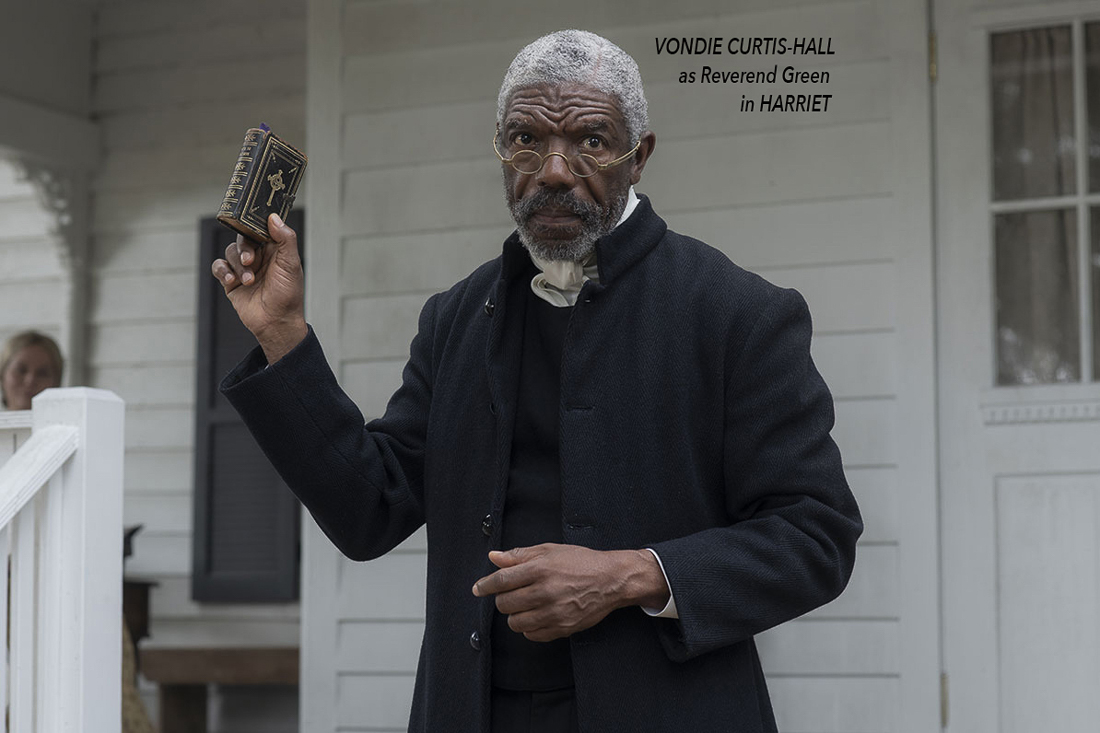
Sheryl Aronson: You directed your husband, Vondie Curtis-Hall who played Reverend Green.
Kasi Lemmons: And I got to direct my son Henry Hunter Hall, who played Walter.
Sheryl Aronson: What it was like to work with both of them?
Kasi Lemmons: This is the fourth movie I’ve directed my husband in. My son is a wonderful actor, and it’s comforting to having him around. This is my second movie with him, but this is his first major league film. It was great being with the two of them.
Sheryl Aronson: There has been a bit of controversy choosing Cynthia Erivo (a British actress) for the role of Harriet. I’ve seen the film and she was outstanding in the role. What was it like to work with Cynthia playing this iconic character?
Kasi Lemmons: Debra Martin Chase, our producer, had seen her in the Broadway production The Color Purple. I hadn’t seen her perform. So at our first meeting, I was unfamiliar with her work. Daniela Taplin Lunberg (producer) had put a photograph of Harriet next to a photograph of Cynthia for me to see. I thought that Cynthia’s face and her cheekbones looked interesting and very much like Harriet’s. But I wasn’t going to commit to casting her in the role. I knew it would be controversial. I wasn’t going to commit to anything until I met Cynthia. At that time she was away doing two movies back to back. By the time I met her, I was deep into the research of Harriet. As I was immersed into the research, this picture began to form of Harriet. It was so vivid; I felt I could touch Harriet’s hand. It was like she was sitting right in front of me and I had access to her. (Kasi gestures with her hands as if touching Harriet.)
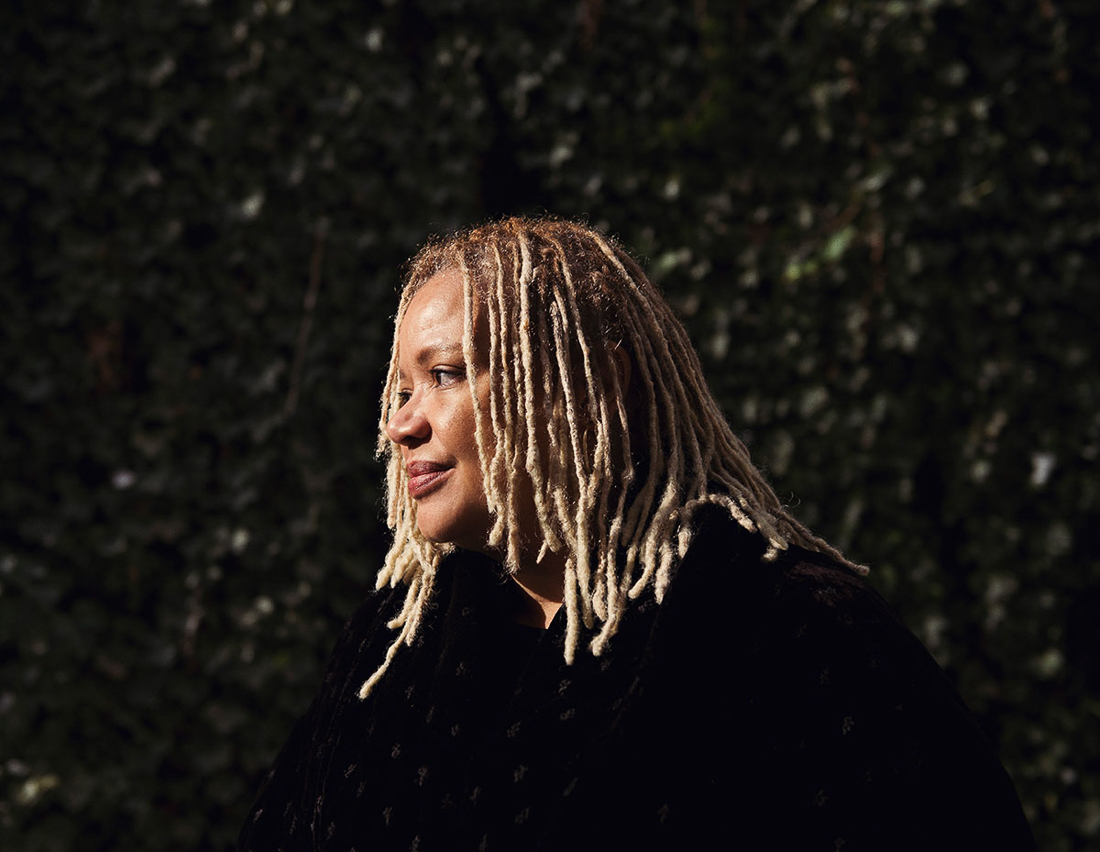
Kasi Lemmons: I met Cynthia at the Russian Tea Room in NYC, and as she walked into the room, I knew she was Harriet. Cynthia is very glamorous, but she’s tiny, muscular, an extreme fitness junkie, a marathoner, and a singer. When she sat down with me, I was impressed with the depth of her soul and the fire within her. But honestly, it wasn’t until we began working together, started rehearsals, and I saw her in the costume (the hat tilted over one eye) that I saw her as absolutely as Harriet. Then I saw her run. I had seen her run in the film Widows. But when I saw her run as Harriet, there was something very feminine and natural about it, yet super fast. She was Harriet.
Sheryl Aronson: What happened during the meeting at the Russian Tea Room?
Kasi Lemmons: We had a 2-1/2 hour meeting. In that meeting we decided we were in this together. And I believed her that first day, and I believed her ever since. I believed her everyday I worked with Cynthia. I think her performance was one of the most committed and beautiful performances I have ever seen.
Sheryl Aronson: Kasi, I absolutely agree with you. As you come off this film, which is so inspiring and powerful, what are you going to take away for yourself as you move forward as a writer/director?
Kasi Lemmons: What’s interesting is that an experience like this is hard to come back from because it was so emotionally fulfilling. Not just the subject matter was inspiring, but everybody came to the movie because of the subject matter. So the cast, the crew, everyone was there for the exact same reason, which was for Harriet. I have never been on a movie where that had happened before. The project was incredibly beautiful to be a part of . . . focusing on an incredibly beautiful subject with incredibly talented actors and a great crew. (She pauses and reflects) I wonder if I’ll ever have this experience again. Therefore, I’m going to judge other projects more stringently because of this.

This article was awarded Writer’s Digest “Honorary Mention” in the print magazine article category. Congratulations Sheryl Aronson (Arting Around). You can read this article and more in the January 2020 print issue of AGENDA!



